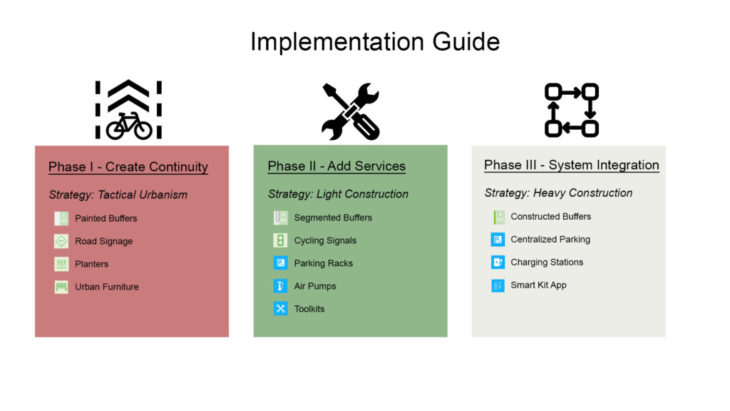Introduction
[UP]cycle is a micromobility intervention at Plaça de Catalunya designed to provide new cycling and micromobility infrastructure and services. Guided by transport planning experts from Mobility in Chain, we studied the plaza and its broken relationship with micromobility users.
Research & Problem Statement
The plaza lies at the heart of Barcelona’s public transit system, hosting a high density of public bus stops, metro lines, taxi stands, and tour bus stops. Pedestrian activity is also high, with tourists and locals alike using the plaza as both a destination and a route along journeys made on foot. Additionally, the plaza has multiple, large underground parking structures. In sum, all modes of transit are well served at the plaza, with one glaring exception: cycling and micromobility infrastructure. There are no cycling lanes traversing the plaza zone, leaving cyclists and other micromobility users to dodge and weave through the motor vehicle and pedestrian traffic on the plaza and surrounding roads in a dangerous and confusing self-negotiation.
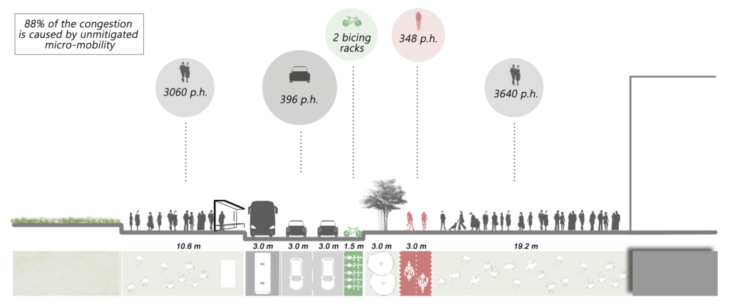
A section of road adjacent to the plaza with field observations
Intervention
In this project, we designed a proposal not only for new cycling lanes and infrastructure to address the discontinuity for micromobility users but also a Micromobility Smart Kit to further address user needs. The design consists of two parts:
1. Cycling lanes and associated infrastructure: connecting existing cycling lanes around the plaza to one another, providing seamless transit to, across, and around the plaza.
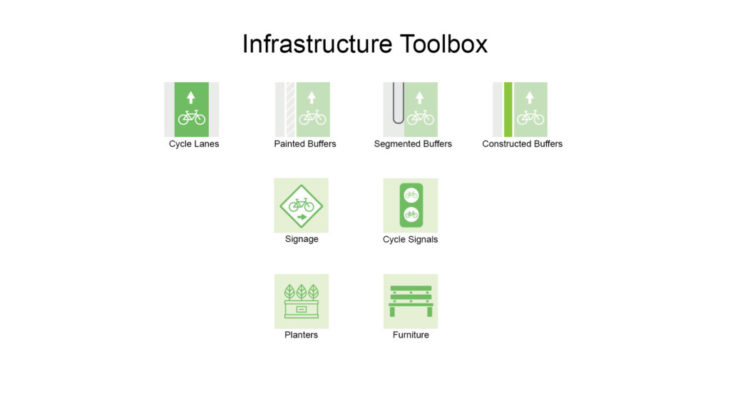
2. Micromobility Smart Kit: a suit of micromobility oriented services including stations with tire pumps, tool kits, electric chargers, bike and scooter parking, as well as a web/app-based map of the micromobility infrastructure located across the city and the cycling lanes that connect it all.
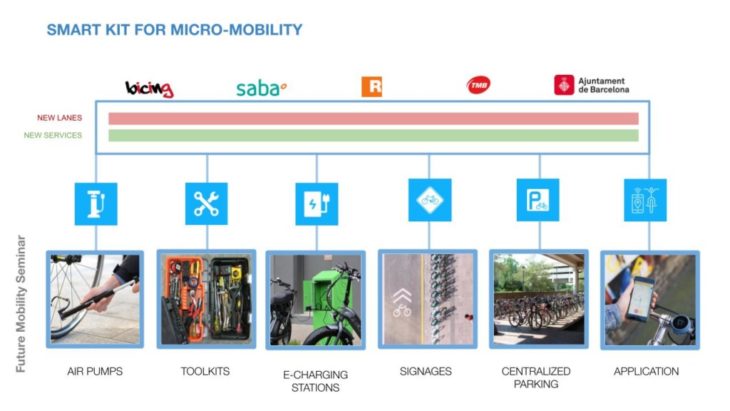
Our intervention is based on a three-phase implementation plan which involves using tactical urbanism to progressively introduce more permanent infrastructure over time. This methodology would allow for design testing periods in which the new infrastructure is opened to users for feedback and analysis before a final construction and permanent implementation occurs.
Conclusions
Overall, Plaça de Catalunya is a beautiful place; the center of the city and the first place those traveling by bus from the airport will arrive. It serves tourists well and provides a cultural meeting place to visitors and locals alike. But one only needs to spend a few minutes observing cyclists and other micromobility users to see that for these people, the plaza is clearly broken. We hope that will time and the careful implementation of good transport planning, the plaza can become the epicenter of a wholistic micromobility network which makes Barcelona one of the best cities in the world for micromobility.
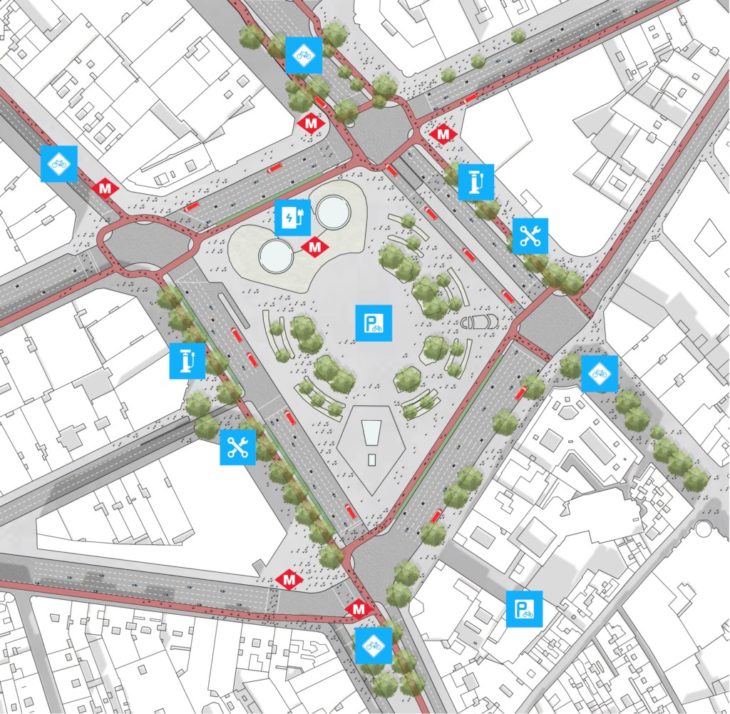
Proposal masterplan
The following is a short video demonstrating our work from the studio.
[UP]cycle is a project of IAAC, Institute for Advanced Architecture of Catalonia developed in the Master in City & Technology 2021/22 by Students: Dimitris Lampriadis, Ocean Jangda, Parshav Sheth, Julia Veiga, Yohan Wadia and Faculty: Federico Parolotto, Francesca Arcuri, Federico Marcantognini.



